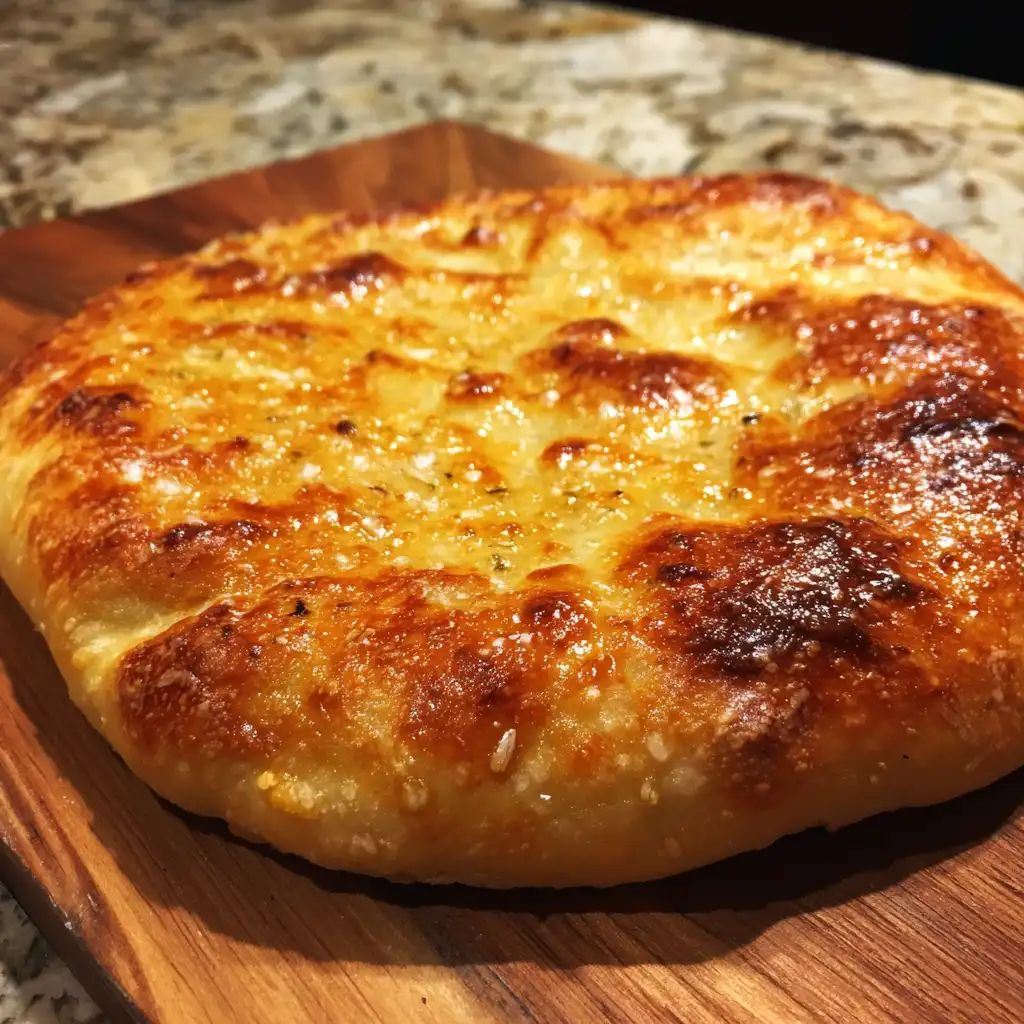Making your own pizza dough is a rewarding experience. Not only does it allow you to control the ingredients, but it also gives you the chance to create a pizza that suits your taste perfectly. When you prepare a homemade pizza dough recipe, you can experiment with flavors and textures that store-bought options simply can’t match.
One of the biggest advantages of homemade dough is freshness. When you make it yourself, you know exactly what goes into it. This means no preservatives or artificial ingredients. Plus, the aroma of freshly baked dough is simply irresistible! Imagine the satisfaction of pulling a golden-brown pizza out of the oven, knowing you crafted the base from scratch.
Another reason to make your own dough is the fun factor. Involving family or friends in the process can turn a simple meal into a delightful activity. Everyone can customize their own pizza with toppings they love. This not only makes for a delicious dinner but also creates lasting memories.
Moreover, homemade pizza dough is often more economical than buying pre-made options. With just a few basic ingredients, you can whip up enough dough for multiple pizzas. This is especially great for gatherings or family nights when everyone can enjoy their favorite flavors without breaking the bank.
In summary, making your own pizza dough is a fantastic way to enhance your cooking skills, enjoy fresh ingredients, and create a fun dining experience. So, roll up your sleeves and get ready to dive into the world of homemade pizza!
Ingredients for Homemade Pizza Dough Recipe
Essential Ingredients for the Perfect Dough
To create a delicious homemade pizza dough recipe, you need a few essential ingredients. Each one plays a vital role in achieving the perfect texture and flavor. Here’s what you’ll need:
- All-purpose flour: 4 cups (500 grams) is the foundation of your dough. It provides structure and chewiness.
- Active dry yeast: 2 teaspoons (7 grams) helps the dough rise. It’s crucial for that light and airy texture.
- Warm water: 1 ½ cups (360 ml) at about 110°F (43°C) activates the yeast. This step is essential for a successful rise.
- Olive oil: 2 tablespoons (30 ml) adds flavor and moisture. It also helps create a nice crust.
- Sugar: 1 teaspoon (5 grams) feeds the yeast, promoting a better rise and a hint of sweetness.
- Salt: 1 teaspoon (6 grams) enhances the flavor of the dough. It’s important not to skip this ingredient!
These ingredients work together to create a dough that is both tasty and easy to work with. The combination of flour and yeast gives the dough its structure, while the olive oil and salt add depth to the flavor. When you mix these ingredients correctly, you’ll have a fantastic base for your pizza.
Optional Ingredients to Enhance Flavor
While the essential ingredients are key, you can also add optional ingredients to elevate your dough. Here are some ideas:
- Herbs: Dried oregano, basil, or rosemary can be mixed into the flour for added flavor.
- Garlic powder: A teaspoon of garlic powder can give your dough a savory kick.
- Parmesan cheese: Adding a bit of grated Parmesan to the flour can enhance the taste and aroma.
- Whole wheat flour: Substitute part of the all-purpose flour with whole wheat for a nuttier flavor and added nutrition.
These optional ingredients allow you to customize your dough to match your personal taste. Experimenting with different flavors can lead to exciting new pizza creations. So, don’t hesitate to get creative!
Step-by-Step Preparation of Homemade Pizza Dough Recipe

Step 1: Mixing the Ingredients
To start your homemade pizza dough recipe, you need to mix the ingredients properly. Begin by activating the yeast. In a small bowl, combine the warm water, sugar, and active dry yeast. Stir gently and let it sit for about 5-10 minutes. You’ll know it’s ready when it becomes frothy. This frothiness shows that the yeast is alive and ready to work its magic!
Next, in a large mixing bowl, combine the all-purpose flour and salt. Mix them well to ensure the salt is evenly distributed. This step is crucial because salt can inhibit yeast activity if it comes into direct contact with it. Once your yeast mixture is frothy, add it to the flour mixture along with the olive oil. Stir everything together with a wooden spoon or spatula until a rough dough begins to form.
Step 2: Kneading the Dough
Now it’s time to knead the dough! Transfer it onto a lightly floured surface. Kneading is essential for developing gluten, which gives the dough its structure. Knead the dough for about 8-10 minutes. You want it to be smooth and elastic. If the dough feels too sticky, sprinkle a little more flour as needed. Remember, the goal is to create a dough that is soft but not overly sticky.
Step 3: First Rise
After kneading, shape the dough into a ball. Place it in a lightly greased bowl, turning it to coat the surface with oil. This prevents the dough from drying out. Cover the bowl with a clean kitchen towel or plastic wrap. Let it rise in a warm, draft-free area for about 1 to 1.5 hours. You’ll know it’s ready when it has doubled in size. This first rise is crucial for achieving that light and airy texture in your pizza crust.
Step 4: Shaping the Dough
Once the dough has risen, it’s time to shape it! Gently punch it down to release the air. Transfer it to a floured surface and divide it into two equal portions. This recipe makes enough dough for two pizzas. Shape each portion into a ball. This step is important because it helps to create a uniform texture in your crust.
Step 5: Second Rise
If you have a little extra time, let the dough balls rest for another 30 minutes. Cover them with a towel during this time. This second rise is optional but can improve the texture of your crust. It allows the gluten to relax, making it easier to stretch the dough later.
Step 6: Prepping for Baking
Now that your dough is ready, it’s time to prep for baking! Preheat your oven to 475°F (245°C). If you’re using a pizza stone, place it in the oven while it preheats. If you don’t have a stone, preheat a baking sheet instead. This high temperature is key to achieving a crispy crust. Once the oven is hot, roll out each dough ball into your desired pizza shape and thickness. Transfer the rolled-out dough to a pizza peel or a baking sheet lined with parchment paper. Now, you’re ready to add your favorite toppings!
Tips for Perfecting Your Homemade Pizza Dough Recipe
Common Mistakes to Avoid
When making a homemade pizza dough recipe, it’s easy to make a few common mistakes. Here are some pitfalls to watch out for:
- Using cold water: Always use warm water to activate the yeast. Cold water can prevent the yeast from working properly, leading to a dense dough.
- Skipping the kneading: Kneading is crucial for developing gluten. If you skip this step, your dough may not rise well and could end up tough.
- Not letting the dough rise: Allowing the dough to rise is essential for a light and airy crust. Don’t rush this step; give it enough time to double in size.
- Overworking the dough: While kneading is important, overworking the dough can make it tough. Knead just until it’s smooth and elastic.
- Ignoring the temperature: Baking at the right temperature is key. If your oven isn’t hot enough, the crust may turn out soggy instead of crispy.
By avoiding these common mistakes, you’ll be on your way to creating a delicious pizza dough that everyone will love!
Best Practices for Dough Consistency
Achieving the right consistency in your dough is vital for a successful pizza. Here are some best practices to ensure your dough turns out perfectly:
- Measure ingredients accurately: Use a kitchen scale for precise measurements, especially for flour. Too much or too little can affect the dough’s texture.
- Adjust flour as needed: If your dough feels too sticky while kneading, sprinkle in a little more flour. However, be careful not to add too much, as this can make the dough dry.
- Check the dough’s elasticity: The dough should spring back when you poke it. If it doesn’t, it may need more kneading.
- Use the right flour: All-purpose flour works well, but for a chewier crust, consider using bread flour. It has a higher protein content, which helps with gluten development.
- Let it rest: If the dough is hard to stretch, let it rest for a few minutes. This allows the gluten to relax, making it easier to shape.
By following these best practices, you’ll create a pizza dough that is not only easy to work with but also deliciously satisfying. Enjoy the process and the tasty results!
Variations of Homemade Pizza Dough Recipe
Whole Wheat Pizza Dough
If you’re looking for a healthier option, whole wheat pizza dough is a fantastic choice. This variation adds more fiber and nutrients to your pizza. To make whole wheat pizza dough, simply substitute half of the all-purpose flour with whole wheat flour. The process remains the same, but you may need to add a little extra water. Whole wheat flour absorbs more moisture, so keep an eye on the dough’s consistency. This dough will have a nuttier flavor and a denser texture, making it a great base for hearty toppings.
Gluten-Free Pizza Dough
For those with gluten sensitivities, gluten-free pizza dough is a delicious alternative. You can use a gluten-free flour blend that contains xanthan gum, which helps mimic the elasticity of traditional dough. Combine 2 cups of gluten-free flour, 1 teaspoon of baking powder, and 1 teaspoon of salt. Then, follow the same steps as the original recipe, using warm water and olive oil. Keep in mind that gluten-free dough may not rise as much, so it’s best to roll it out a bit thicker. This will give you a satisfying crust that holds up well under toppings.
Herb-Infused Pizza Dough
For a burst of flavor, try making herb-infused pizza dough. This variation is simple and adds a delightful aroma to your pizza. To create this dough, mix in 1-2 teaspoons of dried herbs, such as oregano, basil, or thyme, into the flour before combining it with the wet ingredients. You can also add fresh herbs if you prefer. This dough pairs wonderfully with classic tomato sauce and mozzarella cheese, enhancing the overall taste of your pizza. The fragrant herbs will make your kitchen smell amazing while baking!
FAQs About Homemade Pizza Dough Recipe
How long can I store homemade pizza dough?
You can store homemade pizza dough in the refrigerator for up to 3 days. Just wrap it tightly in plastic wrap to keep it fresh. If you want to keep it longer, consider freezing it. Frozen dough can last for up to 3 months. When you’re ready to use it, let it thaw in the refrigerator overnight or at room temperature for a few hours. This way, you can enjoy fresh pizza whenever you like!
Can I freeze homemade pizza dough?
Absolutely! Freezing homemade pizza dough is a great way to have it on hand for future meals. After the first rise, shape the dough into a ball and wrap it tightly in plastic wrap. Then, place it in a freezer-safe bag or container. When you’re ready to use it, simply thaw it in the refrigerator overnight. Once thawed, let it come to room temperature before rolling it out. This ensures a better texture and rise when baking.
What is the best way to roll out pizza dough?
The best way to roll out pizza dough is to start with a lightly floured surface. Dust your work area and the dough with flour to prevent sticking. Use a rolling pin to gently flatten the dough, starting from the center and working your way outwards. If the dough resists stretching, let it rest for a few minutes. This allows the gluten to relax, making it easier to shape. Aim for your desired thickness, whether you prefer a thin crust or a thicker one!
How do I know when my pizza dough has risen enough?
You’ll know your pizza dough has risen enough when it has doubled in size. To check, gently poke the dough with your finger. If the indentation remains and doesn’t spring back, it’s ready to use. If it springs back quickly, it may need a little more time to rise. Remember, patience is key! Allowing the dough to rise properly will give you a light and airy crust that everyone will love.
Print
Homemade pizza dough recipe
- Total Time: 1 hour 35 minutes
- Yield: 2 pizzas
- Diet: Vegetarian
Description
A simple and rewarding homemade pizza dough recipe that allows you to control the ingredients and customize your pizza to your taste.
Ingredients
- All-purpose flour: 4 cups (500 grams)
- Active dry yeast: 2 teaspoons (7 grams)
- Warm water: 1 ½ cups (360 ml) at about 110°F (43°C)
- Olive oil: 2 tablespoons (30 ml)
- Sugar: 1 teaspoon (5 grams)
- Salt: 1 teaspoon (6 grams)
- Optional herbs: Dried oregano, basil, or rosemary
- Optional garlic powder: 1 teaspoon
- Optional Parmesan cheese: Grated
- Optional whole wheat flour: Substitute part of the all-purpose flour
Instructions
- Activate the yeast by combining warm water, sugar, and active dry yeast in a small bowl. Let it sit for 5-10 minutes until frothy.
- In a large mixing bowl, combine all-purpose flour and salt. Mix well.
- Add the frothy yeast mixture and olive oil to the flour mixture. Stir until a rough dough forms.
- Knead the dough on a lightly floured surface for 8-10 minutes until smooth and elastic.
- Shape the dough into a ball and place it in a greased bowl. Cover and let it rise in a warm area for 1 to 1.5 hours until doubled in size.
- Gently punch down the risen dough and divide it into two equal portions. Shape each into a ball.
- Optionally, let the dough balls rest for another 30 minutes covered with a towel.
- Preheat the oven to 475°F (245°C) and prepare your baking surface.
- Roll out each dough ball into your desired pizza shape and thickness, then transfer to a pizza peel or baking sheet.
Latest Amazon Finds
Notes
- Store homemade pizza dough in the refrigerator for up to 3 days or freeze for up to 3 months.
- Use warm water to activate the yeast for best results.
- Allow the dough to rise properly for a light and airy crust.
- Experiment with different variations like whole wheat or herb-infused dough.
- Prep Time: 20 minutes
- Cook Time: 15 minutes
- Category: Main Course
- Method: Baking
- Cuisine: Italian
Nutrition
- Serving Size: 1/2 pizza
- Calories: 250
- Sugar: 1g
- Sodium: 300mg
- Fat: 5g
- Saturated Fat: 1g
- Unsaturated Fat: 4g
- Trans Fat: 0g
- Carbohydrates: 45g
- Fiber: 2g
- Protein: 8g
- Cholesterol: 0mg
Keywords: homemade pizza dough, pizza recipe, easy pizza dough, pizza crust








